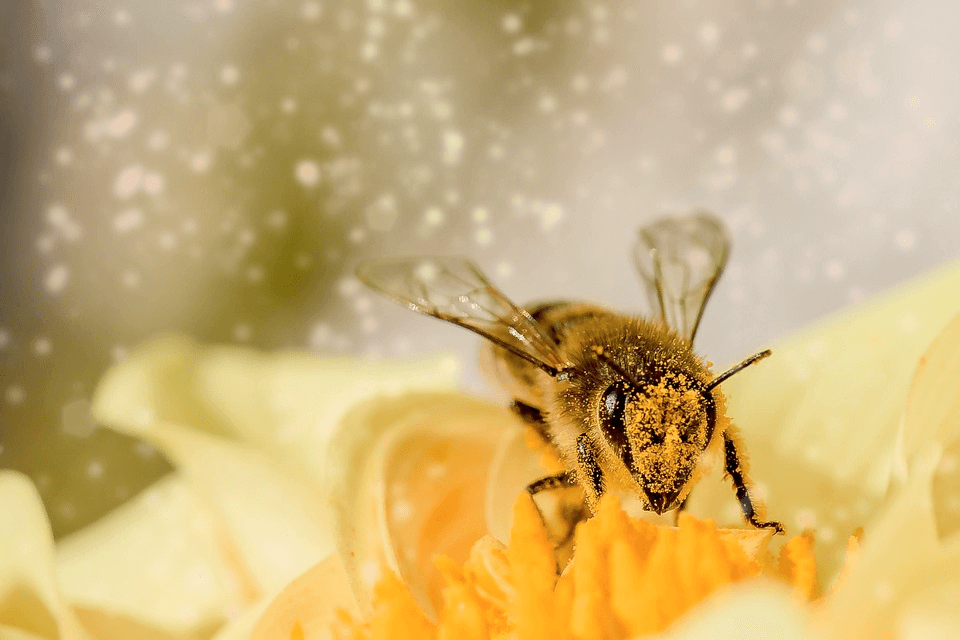
Did you know that some animals are responsible for pollinating one-third of the world’s food supply? Without them, many crops would be unable to produce fruit or seeds. In fact, the United States government has stated that they are “critical” to the nation’s agriculture.
One of those animals is bees. Unfortunately, bee populations worldwide have been declining at an alarming rate in recent years due partly to habitat loss, climate change, and pesticides.
However, there are things we can all do to help support these essential creatures, including creating bee-friendly gardens. By planting specific types of flowers and herbs that attract bees, we can provide them with much-needed sustenance and help keep their populations healthy.
So if you’re interested in helping out our little buzzing friends, read on for some tips on creating a pollinator-friendly garden.
What is a pollinator, and why do we need them?
Pollinators are animals or insects that help move pollen from one flower to another so that it can produce fruit and vegetables. Bees are the most common pollinators, but there are many other species. These include butterflies, moths, hummingbirds, bats, beetles, and even some species of ants.
Pollinators are essential for the production of many of our food crops and other plants, such as cotton and alfalfa, which provide us with materials and medicines.
What animals are pollinators?
Many types of animals are important pollinators, playing an essential role in the ecosystem. Here are the more common ones:
- Bees are the most well-known pollinators responsible for pollinating many plants in our gardens and fields. There are over 20,000 species of bees worldwide, ranging from honey bees to bumblebees. These buzzing insects have a unique structure that allows them to collect pollen on their bodies and deposit it onto other flowers they visit.
- Butterflies also play an essential role as pollinators. There are about 20,000 species of butterfly worldwide, and they feed on nectar from flowers. As these delicate insects move from flower to flower, they spread pollen to other plants.
- Beetles are another type of important pollinator. They visit the flowers of many different plants, transferring pollen between them. One group of beetles, the scarab beetles, are significant for pollinating certain plants in tropical areas.
- Bats are another type of animal that can act as a pollinator. While they typically feed on fruits and nectar from flowers, they also transfer pollen between them as they move around. Bats are significant in areas where other pollinators are not plentiful, such as deserts.
- Finally, hummingbirds are also important pollinators. These tiny birds feed on nectar from flowers and help to spread pollen in the process. Hummingbird species can be found in many different parts of the world and play an essential role in helping plants grow and reproduce.
Have Plants That Attract Pollinators
When deciding what plants to put in your pollinator-friendly garden, the goal is to create a diverse mix of flowers and herbs that will provide food throughout the year. Here are some great options that will attract bees as well as other beneficial insects:
- Annuals: Marigolds, zinnias, cosmos, nasturtiums, and sunflowers.
- Perennials: Asters, daisies, black-eyed Susans, coneflowers, and lavender.
- Herbs: Thyme, oregano, rosemary, and mint.
- Trees: Apple trees and crabapple trees.
- Grasses: Ornamental grasses such as switchgrass and little bluestem.
The Benefits of Having a Pollinator-Friendly Garden
A pollinator-friendly garden not only provides a source of sustenance for bees and other beneficial insects, but it also has numerous benefits for us.
By creating a diverse mix of plants, you’ll have the opportunity to enjoy fresh fruits and vegetables from your own backyard. Plus, having more plants around can help reduce air pollution and provide habitats for other beneficial creatures such as birds, butterflies, and frogs.
You can’t overestimate the importance of pollinators. Without them, many of our food sources would not exist. By creating a pollinator-friendly garden, you can help support their populations and ensure that we have healthy ecosystems for generations to come.
Tips for Keeping Your Garden Thriving
Creating a pollinator-friendly garden is an easy and rewarding way to help the environment. Still, it does take some time and effort to maintain. Here are some tips for keeping your garden in top shape.
- Water deeply and regularly, especially during dry spells.
- Prune flowering plants after they’ve bloomed to encourage new growth.
- Limit the use of pesticides and fertilizers, as these can be harmful to pollinators.
- Plant native species whenever possible — they’re adapted to your local climate and require less maintenance than non-native varieties.
- Mulch around plants to conserve moisture and reduce weeds.
Feed the Pollinators
As you have learned by now, there are many things we can do to help support pollinator populations. It’s not just limited to planting bee-friendly gardens. Creating a diverse garden with different plants blooming throughout the year can provide food for various pollinators. Not only is this good for the environment, but it also has numerous benefits for us.
So why not give it a try? It’s easy and fun, and you may be surprised at how much you enjoy eating fresh fruits and vegetables from your own backyard.
Emily Hawthorne
Related posts
Stay connected
- How LoveOn Chat Is Becoming the Most Versatile AI Companion for Digital UsersThe internet keeps shifting toward hyper-personal interaction, and AI companions are at the center of this shift. What used to be simple chatbots are now evolving into emotionally aware, adaptive, and multi-functional digital partners. Among the new generation of platforms, LoveOn Chat is becoming one... The post How LoveOn Chat Is Becoming the Most Versatile […]
